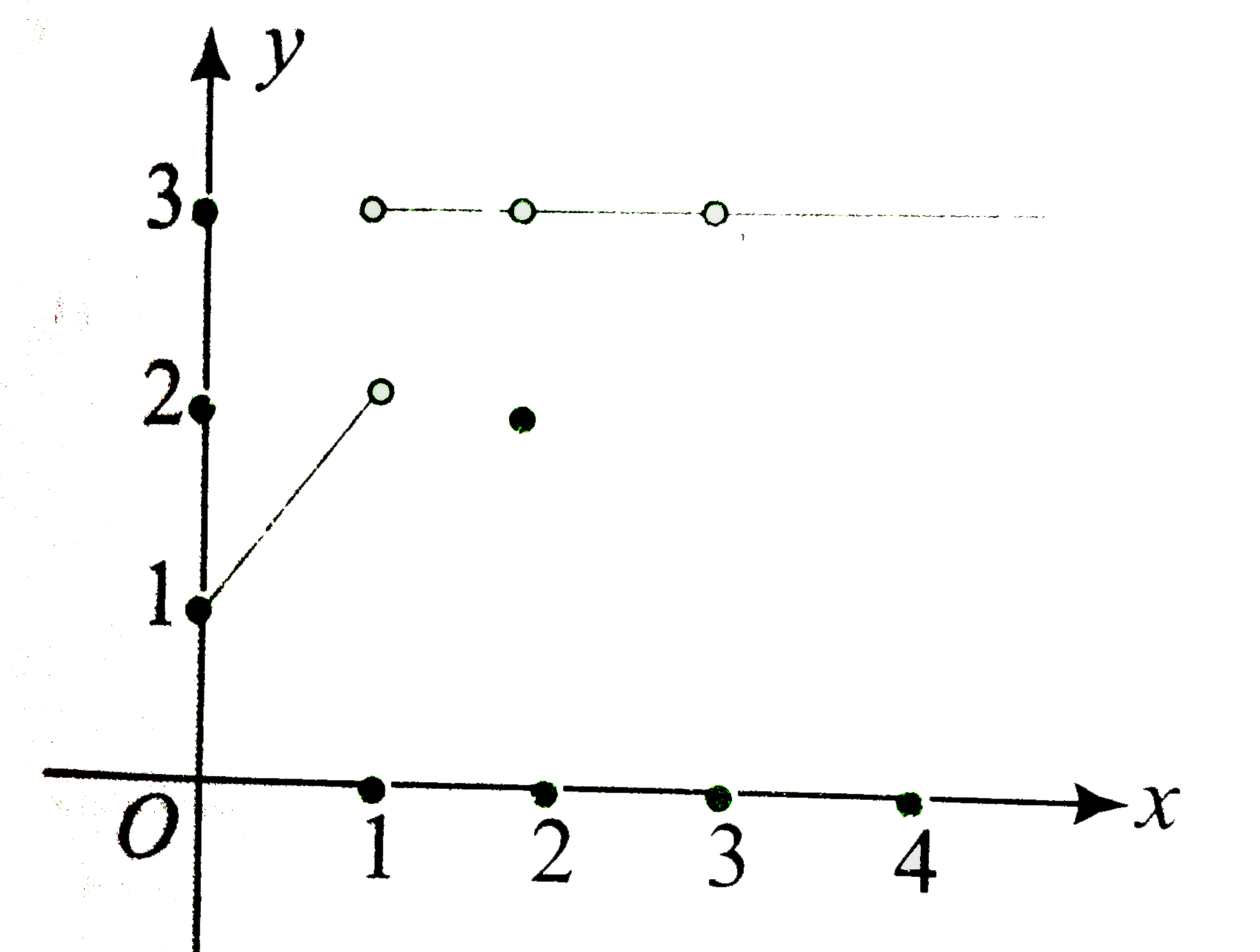For the function f(x)=|x−3|, which of the following is not correct?
The function is not continuous at x=−3
The function is continuous at x=3
The function is differentiable at x=0
The function is differentiable at x=−3
The correct Answer is:A
To determine which statement about the function f(x)=|x−3| is not correct, we will analyze the function's continuity and differentiability at specific points.
Step 1: Understand the function
The function f(x)=|x−3| can be expressed in piecewise form:
- For x<3, f(x)=3−x
- For x≥3, f(x)=x−3
Step 2: Check continuity at x=3
To check continuity at x=3, we need to find the left-hand limit (LHL), right-hand limit (RHL), and the function value at x=3.
- LHL at x=3:
limx→3−f(x)=limx→3−(3−x)=3−3=0
- RHL at x=3:
limx→3+f(x)=limx→3+(x−3)=3−3=0
- Function value at x=3:
f(3)=|3−3|=0
Since LHL = RHL = f(3)=0, the function is continuous at x=3.
Step 3: Check differentiability at x=3
To check differentiability, we need to find the derivative from both sides.
- Derivative for x<3:
f′(x)=−1(since f(x)=3−x)
- Derivative for x≥3:
f′(x)=1(since f(x)=x−3)
At x=3, the left-hand derivative is -1 and the right-hand derivative is 1. Since these two values are not equal, f(x) is not differentiable at x=3.
Step 4: Check differentiability at x=0
For x=0:
- Since 0<3, we use the expression f(x)=3−x.
- The derivative f′(0)=−1, which exists. Thus, the function is differentiable at x=0.
Step 5: Check continuity at x=−3
For x=−3:
- Since −3<3, we use the expression f(x)=3−x.
- The function is continuous everywhere, including at x=−3.
Conclusion
Now we can evaluate the options:
1. The function is not continuous at x=−3 - Incorrect (the function is continuous everywhere).
2. The function is continuous at x=3 - Correct.
3. The function is differentiable at x=0 - Correct.
4. The function is differentiable at x=−3 - Correct.
Thus, the statement that is not correct is option 1.
The function f(x)=|x−3| can be expressed in piecewise form:
- For x<3, f(x)=3−x
- For x≥3, f(x)=x−3
To check continuity at x=3, we need to find the left-hand limit (LHL), right-hand limit (RHL), and the function value at x=3.
limx→3−f(x)=limx→3−(3−x)=3−3=0
limx→3+f(x)=limx→3+(x−3)=3−3=0
f(3)=|3−3|=0
To check differentiability, we need to find the derivative from both sides.
f′(x)=−1(since f(x)=3−x)
f′(x)=1(since f(x)=x−3)
For x=0:
- Since 0<3, we use the expression f(x)=3−x.
- The derivative f′(0)=−1, which exists. Thus, the function is differentiable at x=0.
For x=−3:
- Since −3<3, we use the expression f(x)=3−x.
- The function is continuous everywhere, including at x=−3.
Now we can evaluate the options:
1. The function is not continuous at x=−3 - Incorrect (the function is continuous everywhere).
2. The function is continuous at x=3 - Correct.
3. The function is differentiable at x=0 - Correct.
4. The function is differentiable at x=−3 - Correct.
Topper's Solved these Questions
- DIFFERENTIONBOOK - PUNEET DOGRACHAPTER - DIFFERENTIONEXERCISE - Practice Sheet
20 Videos
- DIFFERENTIONBOOK - PUNEET DOGRACHAPTER - DIFFERENTIONEXERCISE - Practice Sheet
20 Videos
- DIFFERENTIAL EQUATION BOOK - PUNEET DOGRACHAPTER - DIFFERENTIAL EQUATION EXERCISE - PREV YEAR QUESTIONS
84 Videos
- FUNCTIONSBOOK - PUNEET DOGRACHAPTER - FUNCTIONSEXERCISE - PREV YEAR QUESTIONS
74 Videos
Similar Questions
Consider the following graph of the function y=f(x). Which of the following is/are correct? fig. (lim)x→1f(x) does not exist. (lim)x→2f(x) does not exist. (lim)x→3f(x)=3
View SolutionConsider the following graph of the function y=f(x). Which of the following is//are correct?

(a)limx→1f(x) does not exist.
(b)limx→2f(x) does not exist.
(c)limx→3f(x)=3.
(d)limx→1.99f(x)exists.
View Solution
Knowledge Check
If f(x) is an even function of x and g(x) is an odd function then which of the following is true?
Af'(x) is even functionBf(x) is odd functionCf'(x) may be an even or odd function depending an the type of functionDf(x) is a constant functionIF 6≤x≤8 then which one of the following is correct
AThe function does not have inverseBfis its own inverseCThe function has an inverse but f is not its own inverseDnone of aboveLet a function f(x) be definded by f(x)=x−|x−1|x
which of the following is not true ?ADiscontinuous at x=0BDiscontinuous at x=1CNot differentiable at x=0DNot differentiable at x=1
For the function f(x)=x3−6x2−36x+7 which of the following statements is false?
View Solutionf(x)=3−|x|−3x+sgn(e−x)+2 (where sgn x denotes signum function of x). Then which one of the following is correct?
View SolutionConsider the function f(x)=x+√1−x2, then which of the following is are correct
View SolutionIf f(x) and g(x) are odd functions of x, then which of the following is true?
View SolutionIf f(x) and g(x) are odd functions of x, then which of the following is true?
View Solution
